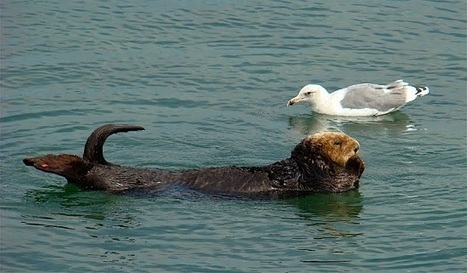Ventura, CA – According to a proposed rule available today, the U.S. Fish and Wildlife has determined that the tidewater goby is not likely to become extinct in the foreseeable future and should be reclassified from endangered to threatened. The tidewater goby is a small gray-brown fish that rarely exceeds two inches in length and generally lives for only one year. Gobies inhabit lagoons, estuaries, marshes and freshwater tributaries along the California coast.
When the goby was listed as endangered in 1994, California was beginning to recover from a drought that lasted from 1987 to 1992. During the drought years, coastal lagoons and estuaries dried up, and the number of tidewater goby localities dropped from 87 to 43, indicating the species’ persistence was in doubt.
When relatively normal rainfall patterns resumed, the number of localities occupied by tidewater gobies increased. In 2007, the Service completed a 5-year review of the species and determined there were 135 known historic localities of which 112 localities were occupied. The tidewater goby appeared more resilient than previously known, and capable of recolonizing areas or increasing populations under more favorable conditions. In the 5-year review, the Service recommended the species be downlisted from endangered to threatened.
The Service was petitioned in 2010 by the Pacific Legal Foundation to downlist the species, based primarily on the information contained in our 2007 species review.
A downlisting from endangered to threatened does not remove the protections the species is currently receiving under the Endangered Species Act, but it better reflects its conservation status.
The Service is seeking comments or information from the public, other government agencies, tribes, the scientific community, industry, and any other interested parties concerning the proposed rule. A copy of the proposed rule is on public view at the Federal Register today and will officially publish on March 13, 2014.
Comments will be accepted from March 13 through May 12, 2014. Submit comments electronically atwww.regulations.gov. In the Search box, enter Docket Number FWS–R8–ES–2014-0001.
Comments can also be sent by U.S. mail or hand-delivery to: Public Comments Processing, Attn: FWS–R8–ES–2013-0001, Division of Policy and Directives Management, U.S. Fish and Wildlife Service, 4401 N. Fairfax Drive, MS 2042-PDM, Arlington, VA 22203.
Requests for a public hearing on the proposed rule must be submitted in writing to Acting Field Supervisor, Ventura Fish and Wildlife Office, 2493 Portola Road, Suite B, Ventura, CA 93003. Hearing requests must be received by April 28, 2014.
Historically, the species occurred from three miles south of the California-Oregon border Tillas Slough, Del Norte County, to 44 miles north of the U.S-Mexico border at Agua Hedionda Lagoon, San Diego County. Currently, the northernmost range has not changed, but the southernmost location is currently the San Luis Rey River, San Diego County, five miles north of Agua Hedionda Lagoon.
Other threats identified at listing included habitat loss due to conversion of coastal wetlands to other uses; alteration of habitat by flood control projects; fragmentation between goby localities; poor water quality; introduced nonnative predators and competitor species; and breaching of sandbars that rapidly drained tidewater goby habitat.
Although the Service determined that some of the threats to the species have been reduced to some extent, other threats or stressors to individual localities remain. In particular, the long-term effects of climate change on the species are unknown. Because the goby occupies a narrow margin of salinity, where fresh and salt water mix, a rise in sea levels could inundate coastal lagoons and estuaries that support the species. Changes in habitat associated with sea level rise could eliminate the tidewater goby from much of its range. This threat is not imminent; however, it is likely that many of the current tidewater goby localities could be inundated by seawater by 2100.
For more information about the goby and the proposed reclassification, please visit: http://www.fws.gov/ventura.
Photos of tidewater goby may be viewed on the Service’s Pacific Southwest Region Flickr page at: http://www.flickr.com/photos/usfws_pacificsw
The mission of the U.S. Fish and Wildlife Service is working with others to conserve, protect, and enhance fish, wildlife, plants, and their habitats for the continuing benefit of the American people. We are both a leader and trusted partner in fish and wildlife conservation, known for our scientific excellence, stewardship of lands and natural resources, dedicated professionals, and commitment to public service. For more information on our work and the people who make it happen, visit www.fws.gov.cno. Connect with our Facebook page athttp://www.facebook.com/usfwspacificsouthwest, follow our tweets at http://twitter.com/USFWSPacSWest, watch our YouTube Channel at http://www.youtube.com/usfws and download photos from our Flickr page athttp://www.flickr.com/photos/usfws_pacificsw/



 Your new post is loading...
Your new post is loading...








Wow. Big move.